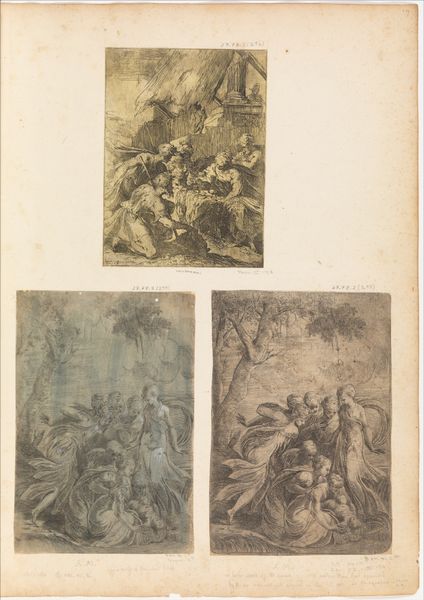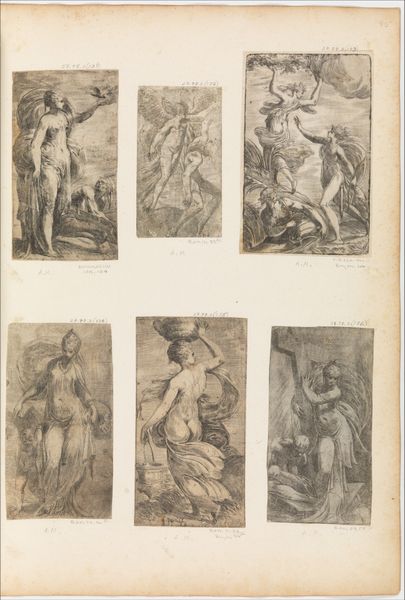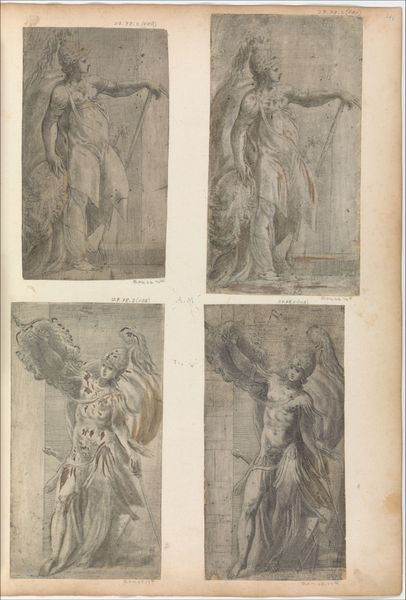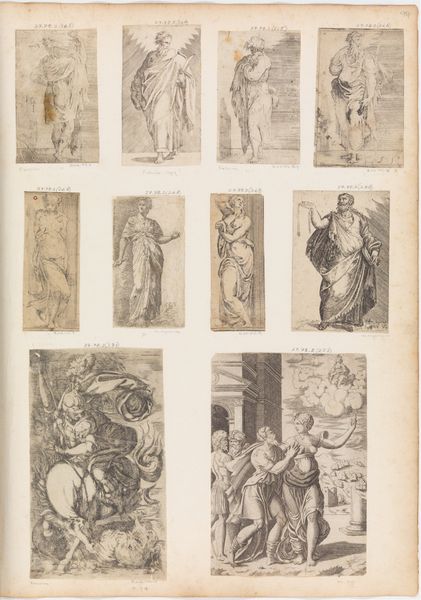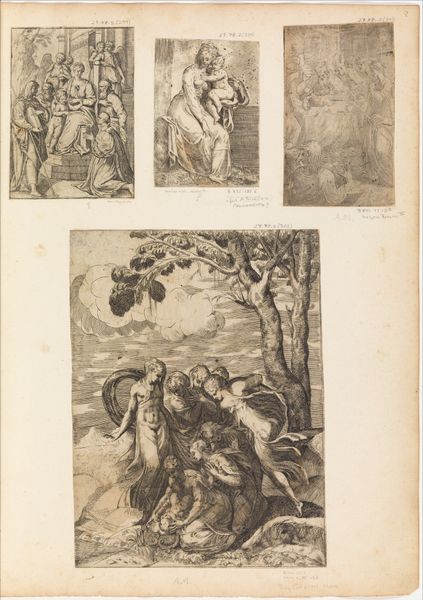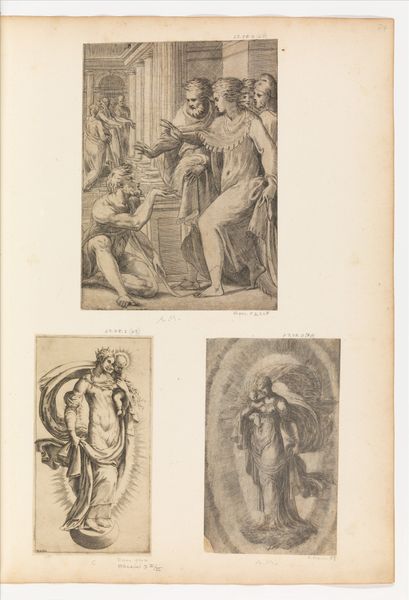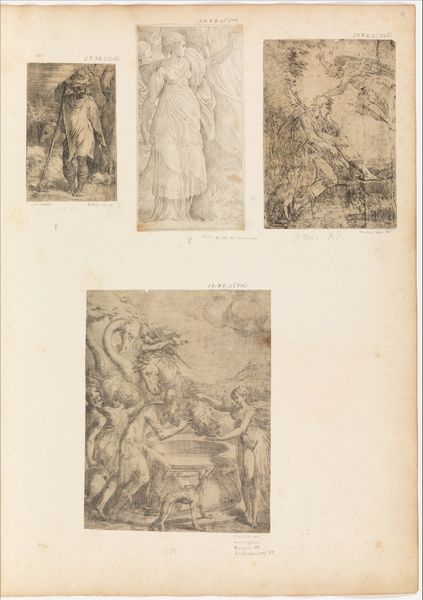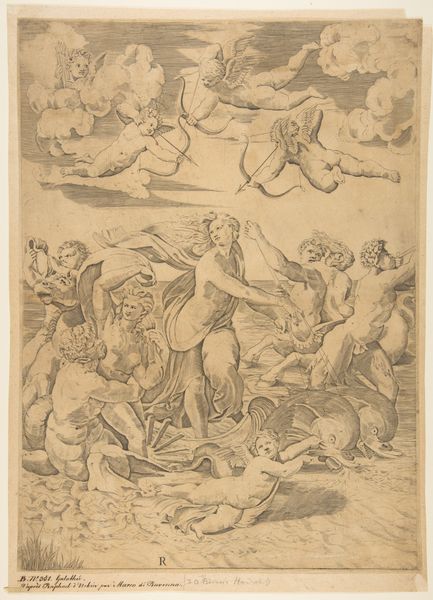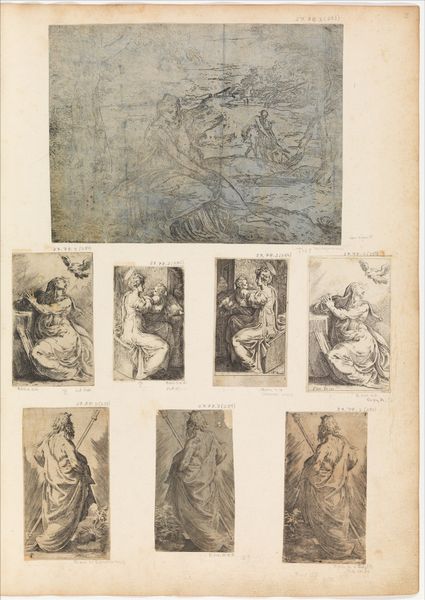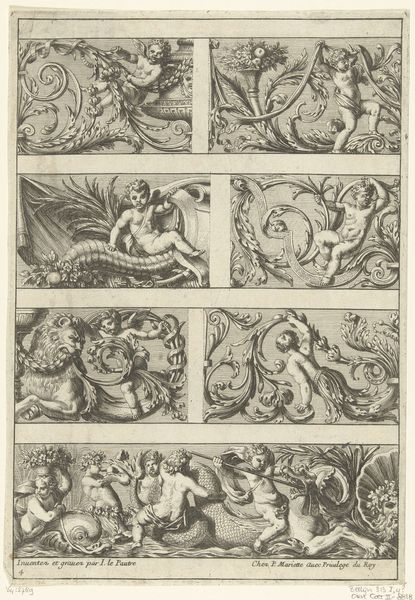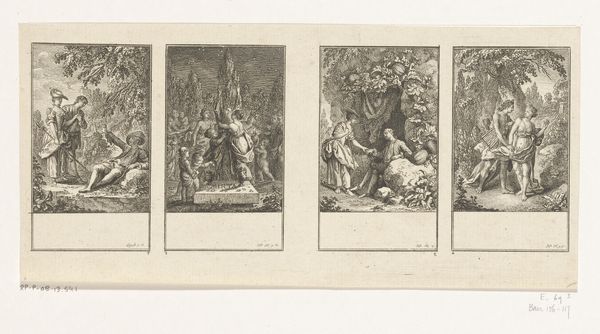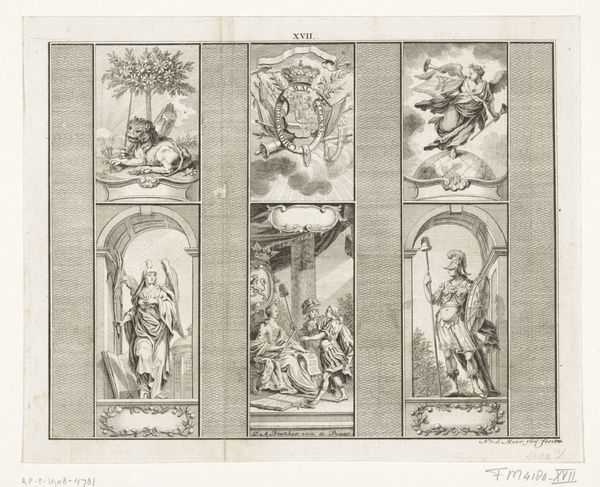
drawing, print
#
drawing
#
ink painting
# print
#
pencil sketch
#
figuration
#
11_renaissance
#
men
#
line
#
history-painting
#
italian-renaissance
Dimensions: Sheet: 8 7/16 × 5 3/8 in. (21.5 × 13.7 cm)
Copyright: Public Domain
Curator: I am immediately struck by the ethereal quality of this print, a sort of dreamscape. Editor: That’s right. What we’re seeing here is "Resurrection," a work from the Italian Renaissance, dating to sometime between 1503 and 1540. It is held at the Metropolitan Museum of Art. It appears to be a page with sketches and studies on it using pen, ink and perhaps pencil too. It presents scenes of rising, ascension and draped figures holding weapons or hands in gestures. Curator: Studies, yes, that feels accurate. They’re like captured thoughts on paper. I see an exploration of weight and weightlessness in the figures...almost like a dance happening, you know, between heaven and earth. I almost want to float along with them, even the poor, startled soldiers! Editor: Well, the concept of resurrection itself has deep roots, intertwined with narratives of hope, liberation, and defiance against oppressive structures. Remember that this was a time when the Church wielded enormous power, dictating norms around everything from acceptable behavior to artistic expression. What statements about power were these artists and patrons making at that time? Curator: And there it is…I keep it in the intuitive zone but you root everything to the concrete. But maybe we aren’t so different? To portray figures rising, liberated – whether literally or figuratively through artistic freedom itself – is pretty revolutionary when you think about it! Even small drawings and prints like these could play their part. Editor: Exactly. These weren't just isolated images. They were part of a much larger cultural conversation, subtly challenging established authority. They hint at movements pushing for social and spiritual change through a reimagining of biblical narratives. We must look closely. Who is represented and what is left out? Curator: All that in a tiny print! See, this is why art still fascinates. A quiet little "Resurrection" speaking volumes, centuries later. The possibilities when looking closely are…endless. Editor: Indeed, reflecting on the intersections of art, power, and resistance always brings a necessary perspective to interpreting history. These studies have allowed us to ask relevant questions to contemporary dialogues.
Comments
No comments
Be the first to comment and join the conversation on the ultimate creative platform.
